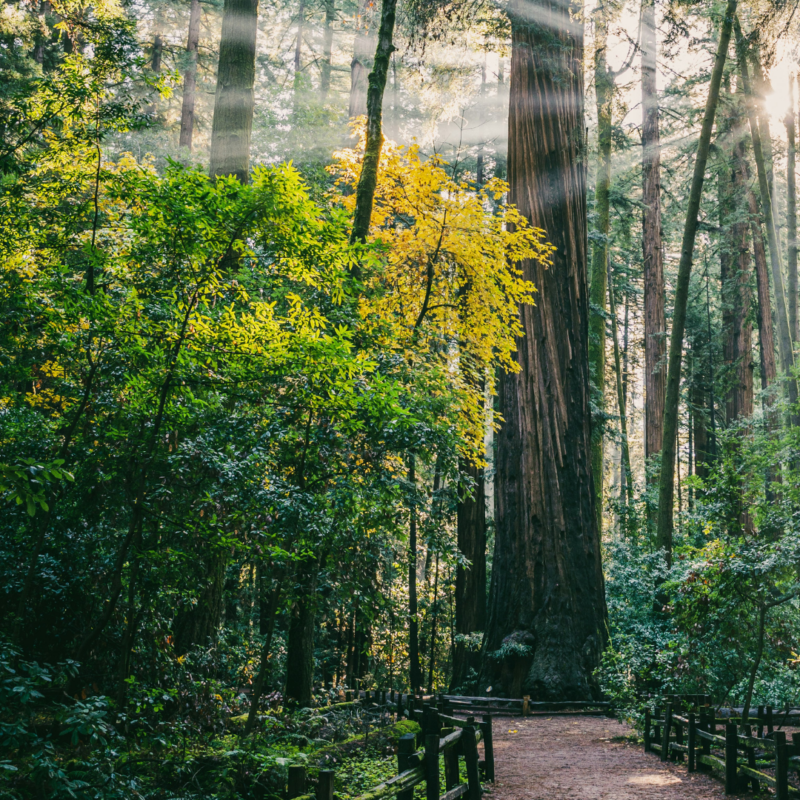“The feeling of awe and sense of wonder arises from the recognition of the deep mystery that surrounds us everywhere.
Anagarika Govinda
In previous posts, I wrote about activities that boost positive emotions, like happiness, as well as activities that buffer against stress and build resilience. Today, I want to talk about another important aspect of thriving: awe. While awe is considered a positive feeling, it’s a specific one. We feel awe underneath a starry sky in the woods or when we look into the seemingly endless depths of the ocean. We can even feel awe when we learn an amazing new theory about the world or have a profound spiritual experience. Awe is that feeling of recognizing the vastness of the world around you, and noticing that you are one piece of a big, beautiful, and complex system.
We believe this experience of awe—often elicited by beauty in nature—is an important aspect of thriving. Not only is awe associated with all the same benefits of positive emotions (such as decreased stress1 and improved mental and physical health2), but awe has a few of its own, specific benefits. For one, awe can act as a buffer in times of loss.3 Awe may also help us reorder our priorities and recognize what is really important in our lives by connecting us to our own personal sense of spirituality and the world around us. This helps us feel more connected to the world, improves our sense of purpose4, and allows us to feel less focused on our daily troubles5. This may be why awe also helps us feel more generous and willing to support those around us6. Lastly—and perhaps most relevant today—awe can actually reduce feelings of impatience7 and aggression8. So, if you’re feeling like you’re at your wit’s end, an awe activity may be just what the (academic) doctor ordered.
So, how can you create simple awe-full experiences at home? Here are 3 activities, backed by empirical research, that we think you should try:
Activity 1: Pictures of Awe9
Timing:
Varies per day, 2 weeks
How To:
- Over the next two weeks, become mindful of nature or natural things in your environment. This could mean noticing nature as you’re out on a walk, noticing nature in a movie, or even just noticing the beauty of your hardwood (natural) floors. Notice how these things make you feel.
- If and when any of the natural things in your environment give you a stronger-than-average charge of emotion, take a picture of that object or nature scene. Try to take at least 10 pictures over the 2-week period. This may be one or several pictures on the same day. Don’t adhere to a strict schedule. Rather, take a photo when you react to the nature in your life.
- Each time you take a photo, also write down a brief description of the feelings that the photo gave you. What emotions did it stir up? What did it make you feel?
Activity 2: Memories of Awe10
Timing:
10-15 minutes, once a week
How To:
- First, take a few minutes to think about a time when you experienced awe in your past. Remember, when you feel awe, you tend to become aware of the vastness of the world. You may feel smaller as the thing that makes you feel awe changes the way you understand the world. For instance, you might feel awe when you look up at the stars at night and feel how vast and beautiful the universe is (awe in the presence of something physical) or you might feel awe after being exposed to a new idea or brilliant theory (awe at an amazing psychological feat). Really, pick any experience that made you feel like, “Wow! The world is big and I feel fear and/or wonder as I recognize that!” and, that for a moment, changed your perspective on the world and your place in it. Now that’s awe!
- Now, write about your experience! Be sure to describe in detail what the source of your awe was, as well as the specific feelings it made you feel.
Activity 3: Videos of Awe11
Timing:
5 minutes, 1-3 times a week
How To:
Whether nature is too hard to access right now or you just prefer to stay home, try watching one of these videos12, which are full of awe-inspiring nature scenes. Feel free to also Google your own videos of places you know inspire awe in you (e.g. space, the Grand Canyon, etc.) To get started though, try these:
Wherever you are, however close or far from nature you may be, seek out those things that make you feel a sense of awe. Whether it’s watching videos of the final frontier of space, the Irish cliffs of Moher, or walking down the street to look at the beauty of that old oak at the end of your block. When you take a moment to feel small, you may just find you also feel happy, connected, and more patient. We can all use a little more awe to not just survive, but thrive.



